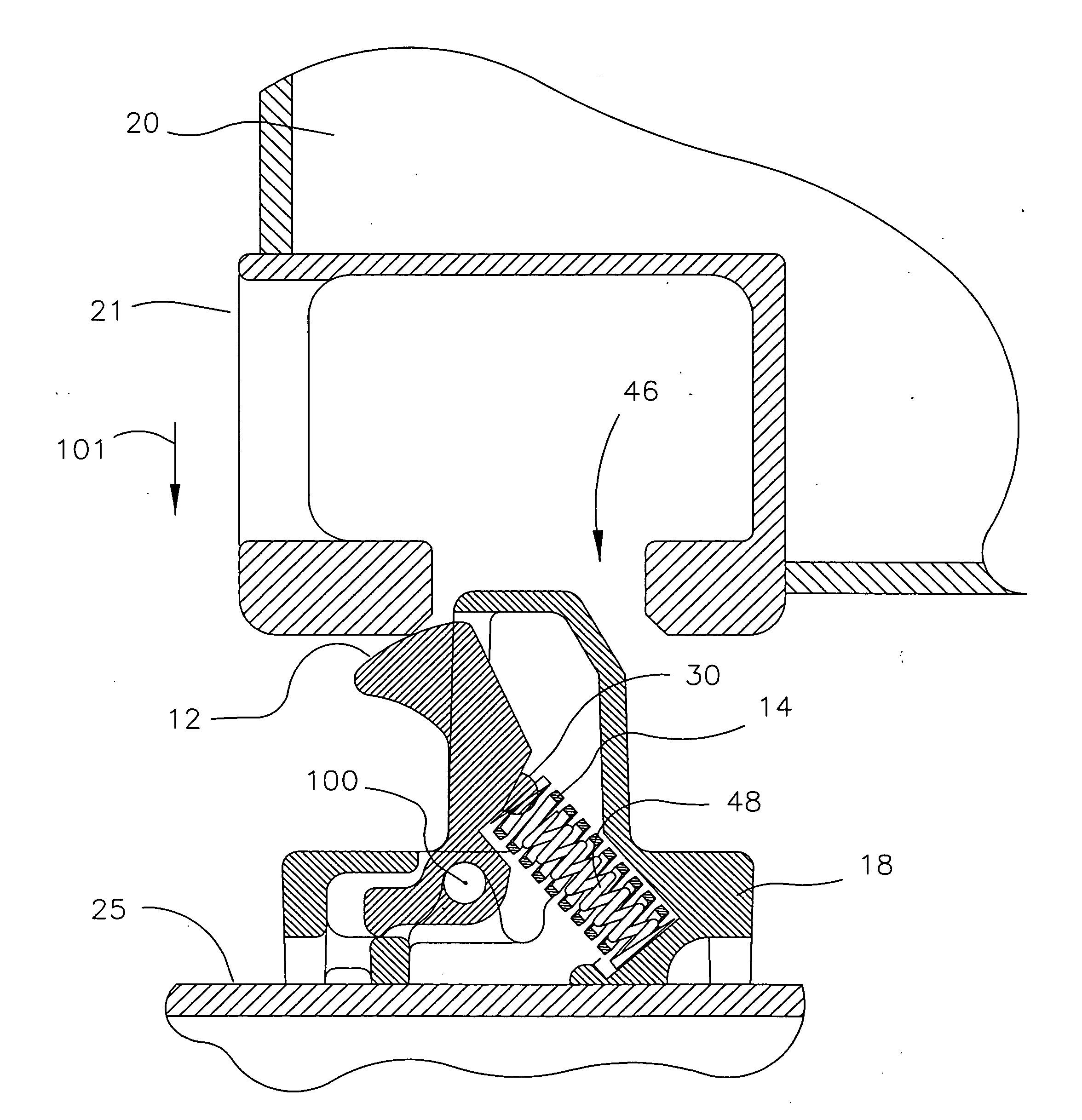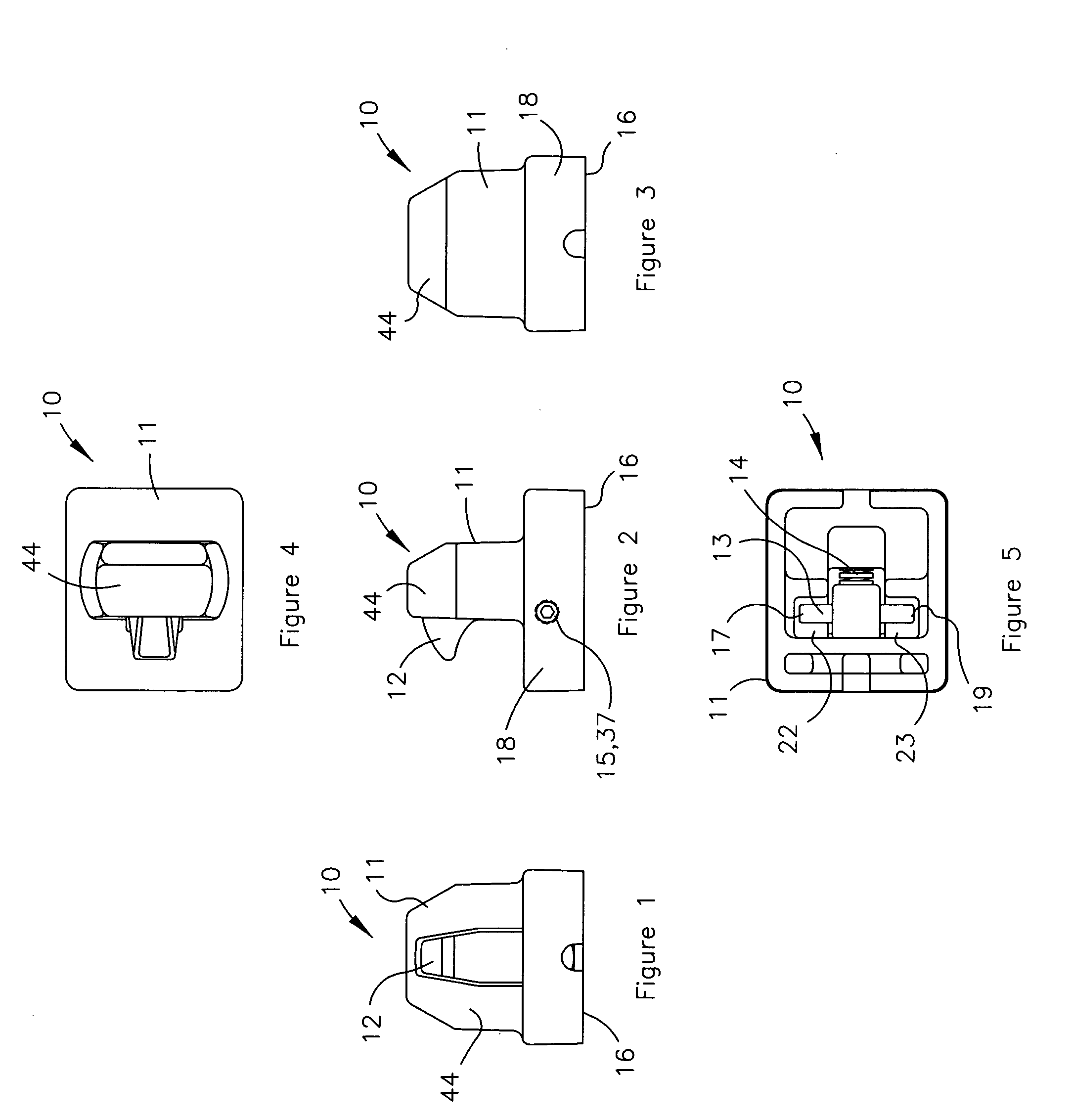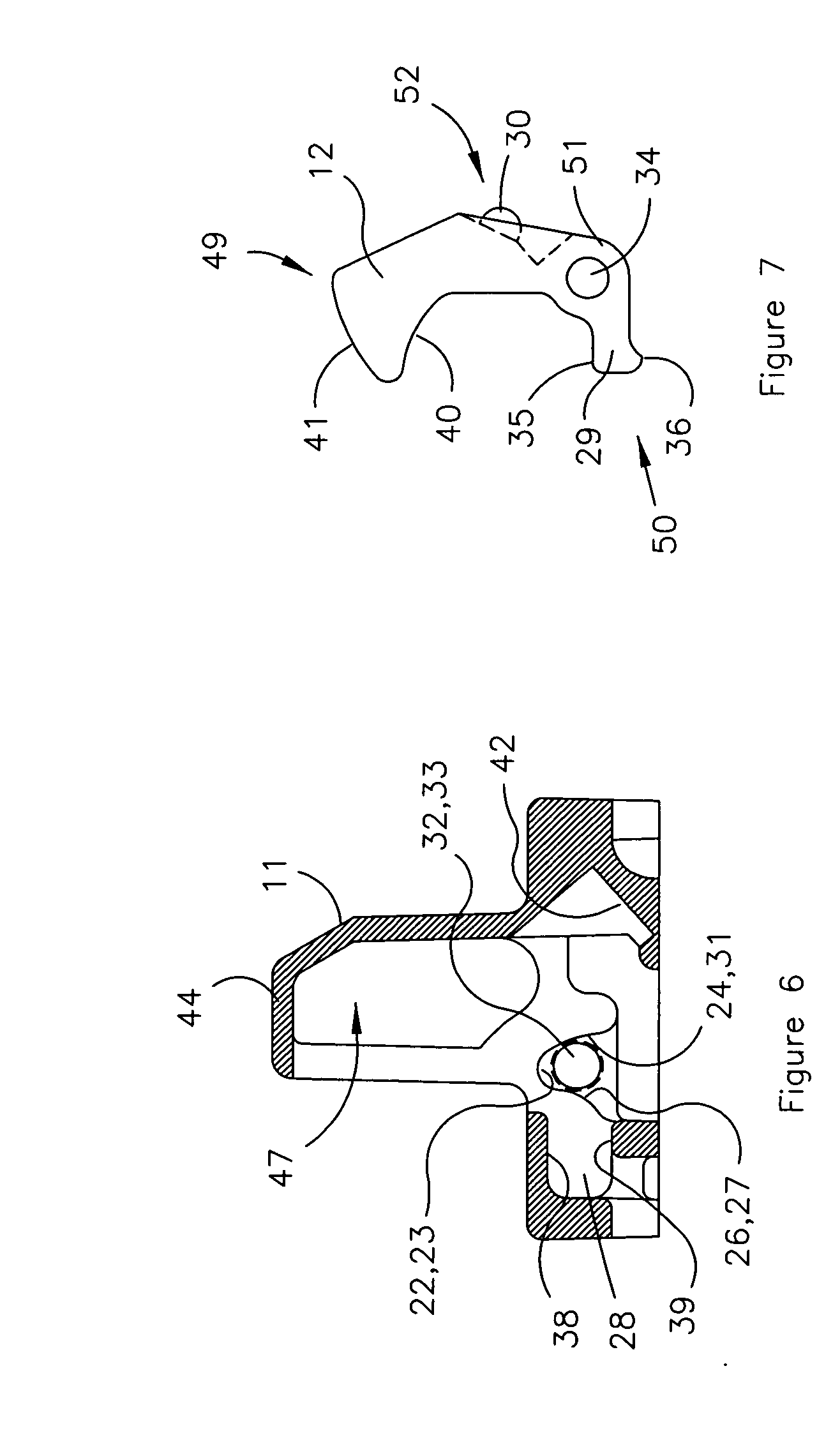Latch device with variable latching resistance and method
a latching resistance and variable technology, applied in the field of cargo container securement devices, can solve the problem of high impact force for all
- Summary
- Abstract
- Description
- Claims
- Application Information
AI Technical Summary
Benefits of technology
Problems solved by technology
Method used
Image
Examples
Embodiment Construction
[0071]Referring now with more specificity to the drawings, the present invention provides a latch device or assembly 10 for releasably securing a cargo container (not specifically illustrated) to a support surface (as at 25). The latch device includes or comprises a housing 11, a latch member 12, a pin 13, a first compression spring 14, and two side screws as at 15 and 37. One side screw 15 or 37 is on each side of housing 11. The housing 11 comprises an upper, container-penetrating shell as at 44 and an inner, coil-receiving cavity as at 42. The shell 44 is receivable by a latch-actuating opening 46 and defines an open-face, latch-receiving cavity as at 47.
[0072]An assembled frontal view of the latch device 10 is shown in FIG. 1, and an assembled side lateral view of the latch device 10 is shown in FIG. 2. The housing 11 further comprises a base bottom 16 that interfaces with the deck or vehicle or similar planar surface as at surface 25, and a base 18 which is typically spaced bet...
PUM
 Login to View More
Login to View More Abstract
Description
Claims
Application Information
 Login to View More
Login to View More - R&D
- Intellectual Property
- Life Sciences
- Materials
- Tech Scout
- Unparalleled Data Quality
- Higher Quality Content
- 60% Fewer Hallucinations
Browse by: Latest US Patents, China's latest patents, Technical Efficacy Thesaurus, Application Domain, Technology Topic, Popular Technical Reports.
© 2025 PatSnap. All rights reserved.Legal|Privacy policy|Modern Slavery Act Transparency Statement|Sitemap|About US| Contact US: help@patsnap.com



